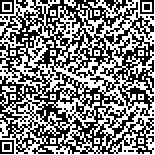下载中心
优秀审稿专家
优秀论文
相关链接
摘要

冬小麦是中国的主要粮食作物且种植面积年际变化较大,及时准确掌握冬小麦种植面积变化有利于国家和相关部门科学决策。遥感技术是获取大范围冬小麦种植面积数据的最有效手段。前期研究多利用多时相中低分辨率影像(如MODIS)的归一化植被指数NDVI(Normalized Difference Vegetation Index)开展大范围冬小麦种植区提取,因分辨率低导致精度难以令人满意。Sentinel-2卫星是唯一能获取3个红边波段影像的米级分辨率传感器,但应用其红边波段进行大范围冬小麦提取的研究几乎没有。本文分析了红边位置指数REPI(Red-Edge Position Index)与NDVI各自在冬小麦提取中的优势,并基于冬小麦物候特征与JM距离研究关键时相,提出一种综合多时相Sentinel-2 PERI、NDVI的大范围冬小麦提取方法,将其应用于2020年京津冀地区的冬小麦种植区提取,冬小麦总面积提取误差为-2.57%。提取结果与Google Earth高分辨率光学影像的解译结果进行比较,总体精度为94.24%,Kappa系数为0.88,相较于已有大范围冬小麦提取研究精度有明显提升,表明了本文方法的有效性。
As the main grain crop in China, winter wheat planting area has great inter-annual variations. Remote Sensing (RS) technology is the most effective method to obtain the planting area data of winter wheat over wide areas. The Normalized Difference Vegetation Index (NDVI) parameter derived from multi-temporal RS images with medium and low resolution, such as MODIS imagery, is frequently used for such purpose. But the accuracy of obtained winter wheat planting area is usually unsatisfactory due to the limited spatial resolution of the used RS images. Sentinel-2A and Sentine-2B, which were launched in 2015 and 2017 respectively, are currently the only spaceborne sensors capable of acquiring images in three red-edge spectral bands with meter-level spatial resolution. Red-edge bands have great potential in discriminating vegetation types and evaluating vegetation health condition, because these bands are sensitive to the chlorophyll and the nitrogen contents of vegetation. However, there are few studies on winter wheat extraction over wide area using the red-edge bands of Sentinel-2 data. In this paper, a wide-area winter wheat extraction method based on the Red-Edge Position Index (REPI) and the NDVI data derived from multi-temporal Sentinel-2 images is proposed, which is then applied to extract the winter wheat planting area in the Beijing-Tianjin-Hebei region for the year of 2020. Firstly, the temporal REPI and NDVI are extracted from Sentinel-2 data. Secondly, the key temporal phases for discriminating winter wheat are studied, and the decision rules based on temporal REPI and NDVI features for winter wheat discrimination are constructed. Finally, the winter wheat planting area in the Beijin-Tianjin-Hebei region in 2020 is extracted using the constructed decision rules. The extracted winter wheat area is validated by two kinds of reference data. It shows an error of -2.57% when compared with the winter wheat planting area data published by the National Bureau of Statistics. Additionally, the overall accuracy of the extracted winter wheat area is 94.24% and the Kappa coefficient is 0.88 in comparison with the visual interpretation results of Google Earth high-resolution images. The conclusions are: (1) REPI changes with the change of chlorophyll concentration during the growth period of winter wheat, and gradually increases with the growth of winter wheat seedlings after sowing period, until reaching the first peak (about 722 nm) at the emergence stage (November). During the overwintering period, it falls below 715 nm. The second peak is reached at heading stage (April-May), with the corresponding value greater than 730 nm. The REPI value in the mature stage drops below 720 nm. Especially, the REPI at heading stage provides excellent separability between winter wheat and woodland, while NDVI has a serious commission error when distinguishing winter wheat from woodland. (2) It can not achieve satisfactory result when either parameter (REPI or NDVI) of single date is used to extract winter wheat over wide areas. However, the decision tree classifier constructed based on the combination of REPI and NDVI parameters derived from multi-temporal Sentinel-2 data can extract winter wheat area with very high accuracy over wide areas, because other land cover types can be well excluded by the specific features presented by either REPI or NDVI of the key temporal phases, thus the effect of “different cover types with similar pectrum” associate with wide-area classification can be largely mitigated. This research demonstrates the significance of the red-edge bands of Sentinel-2 in discriminating winter wheat of wide-area.

